
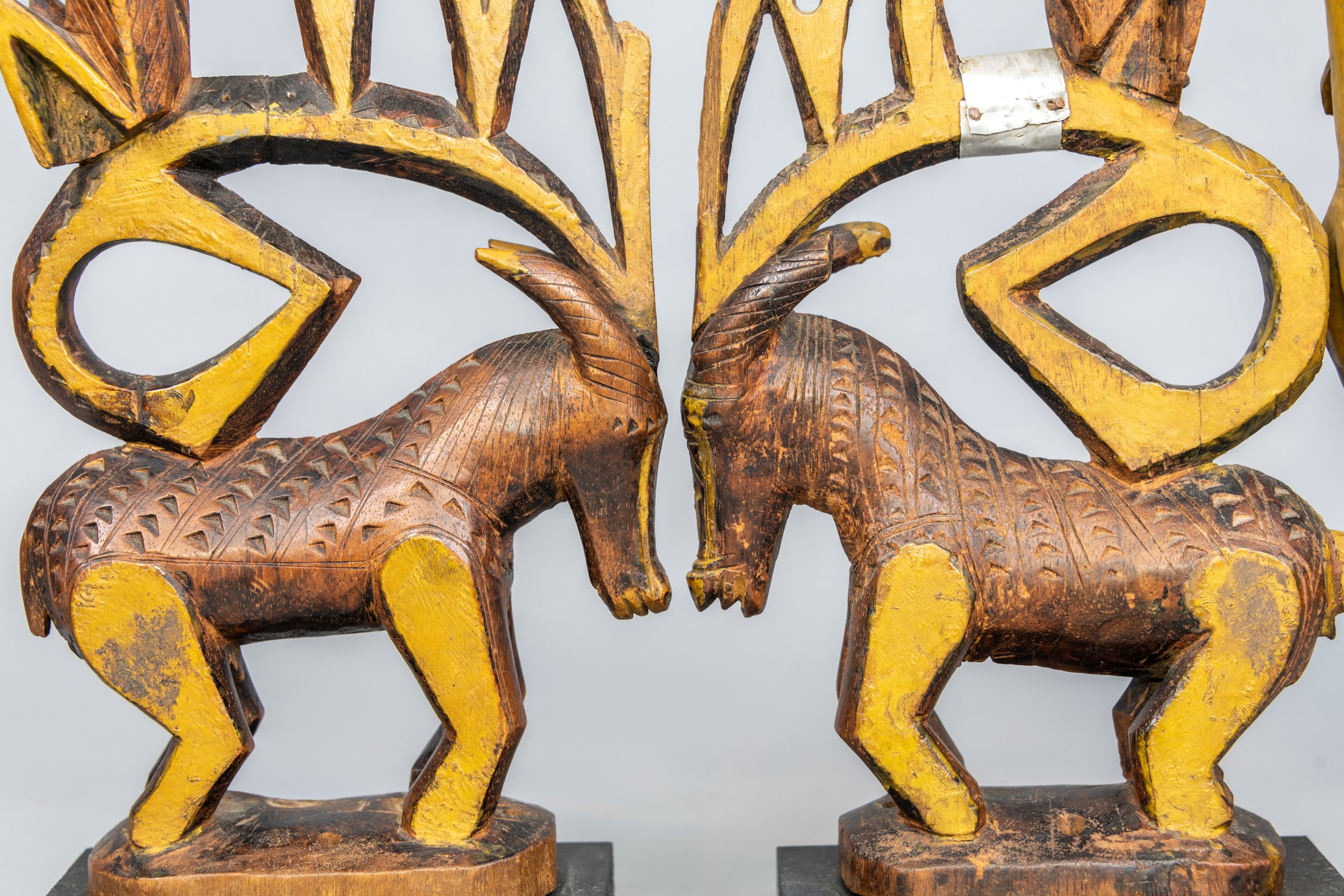

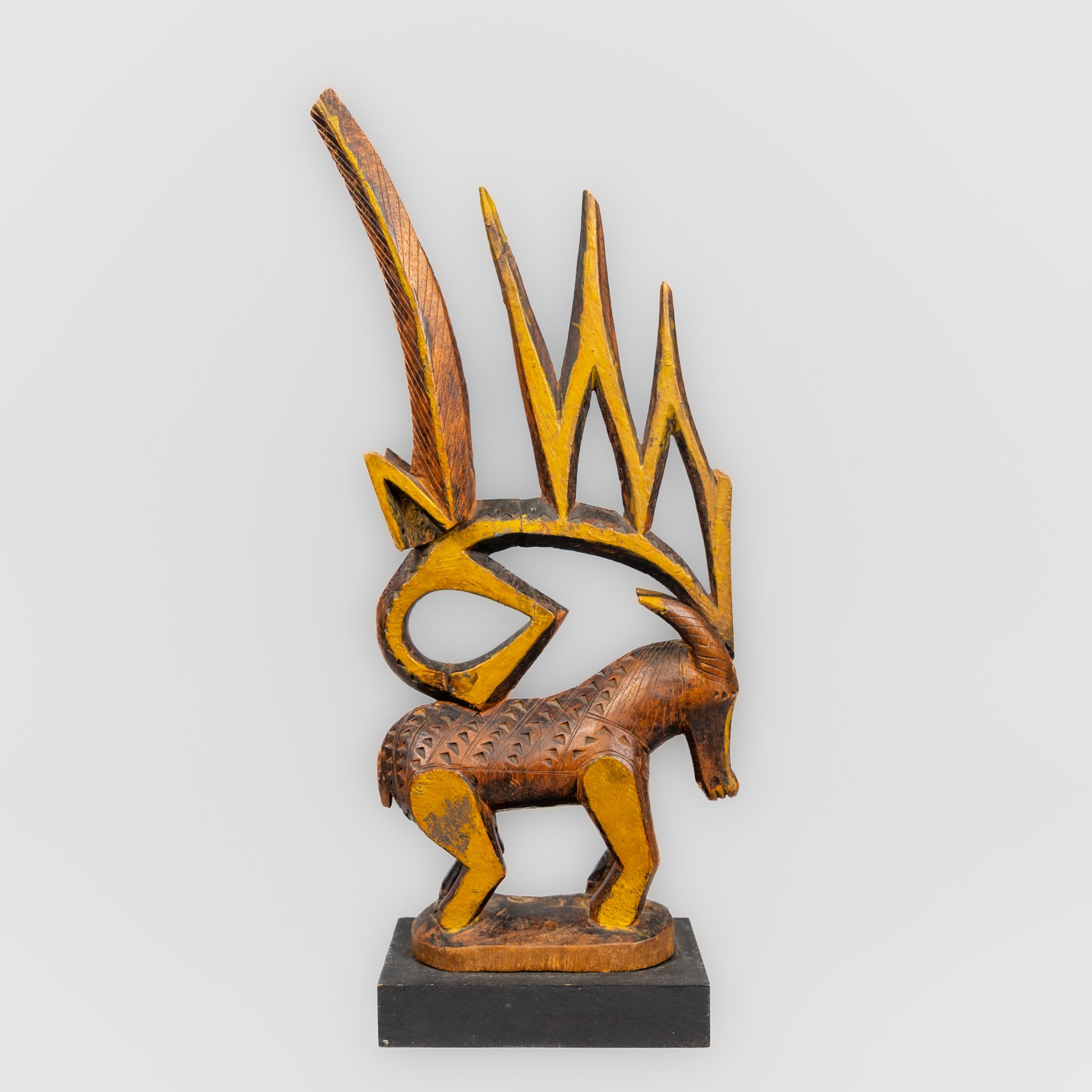



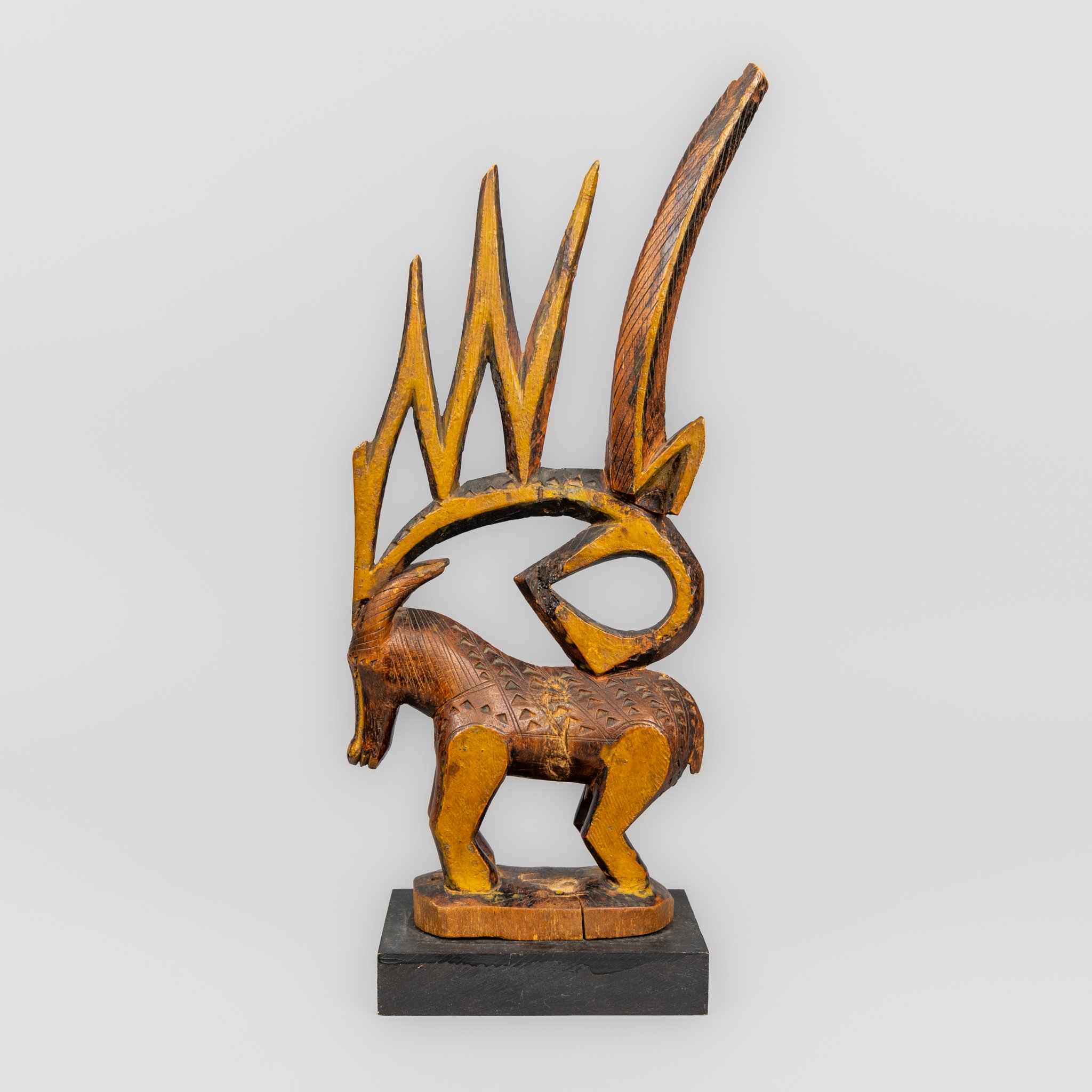
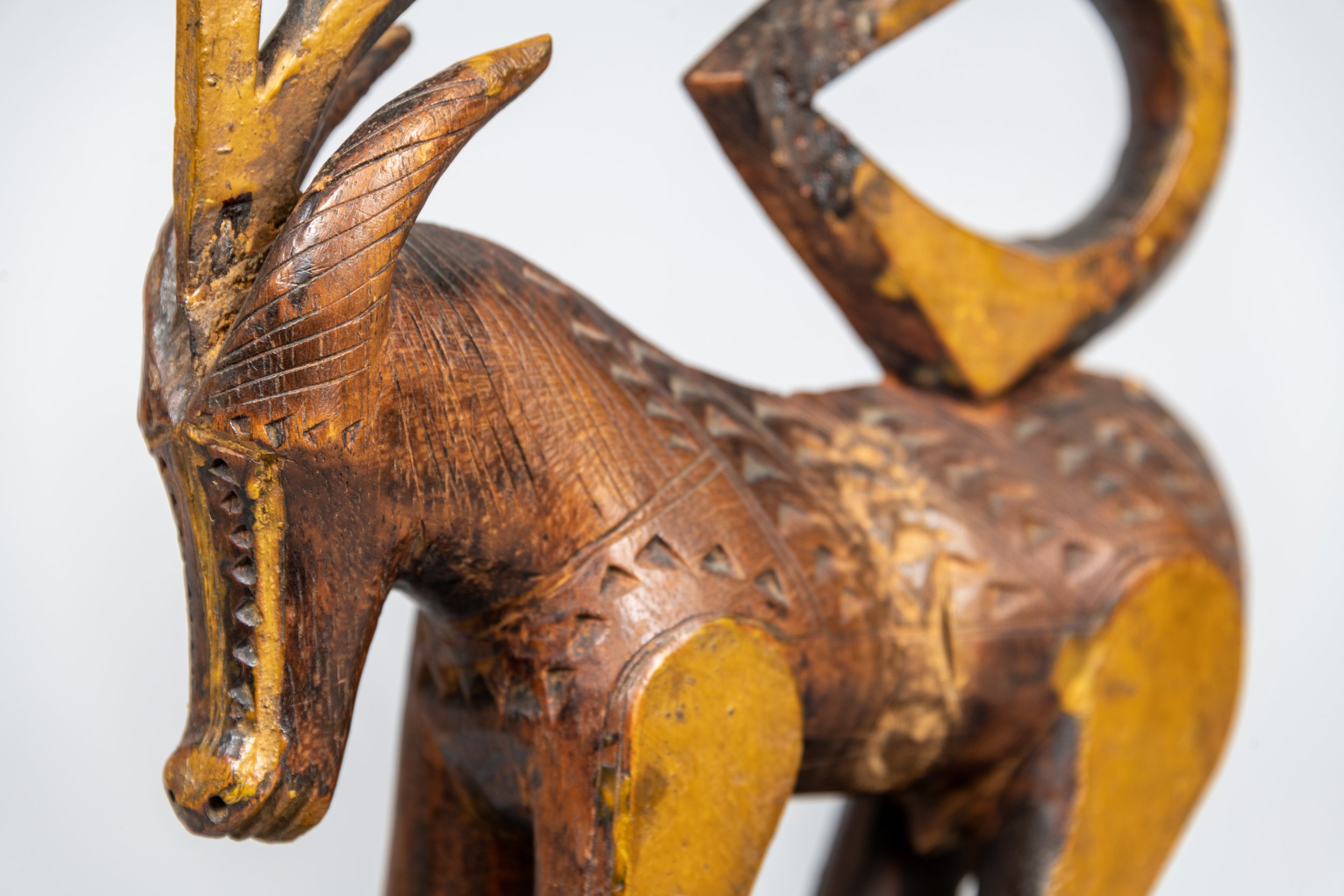

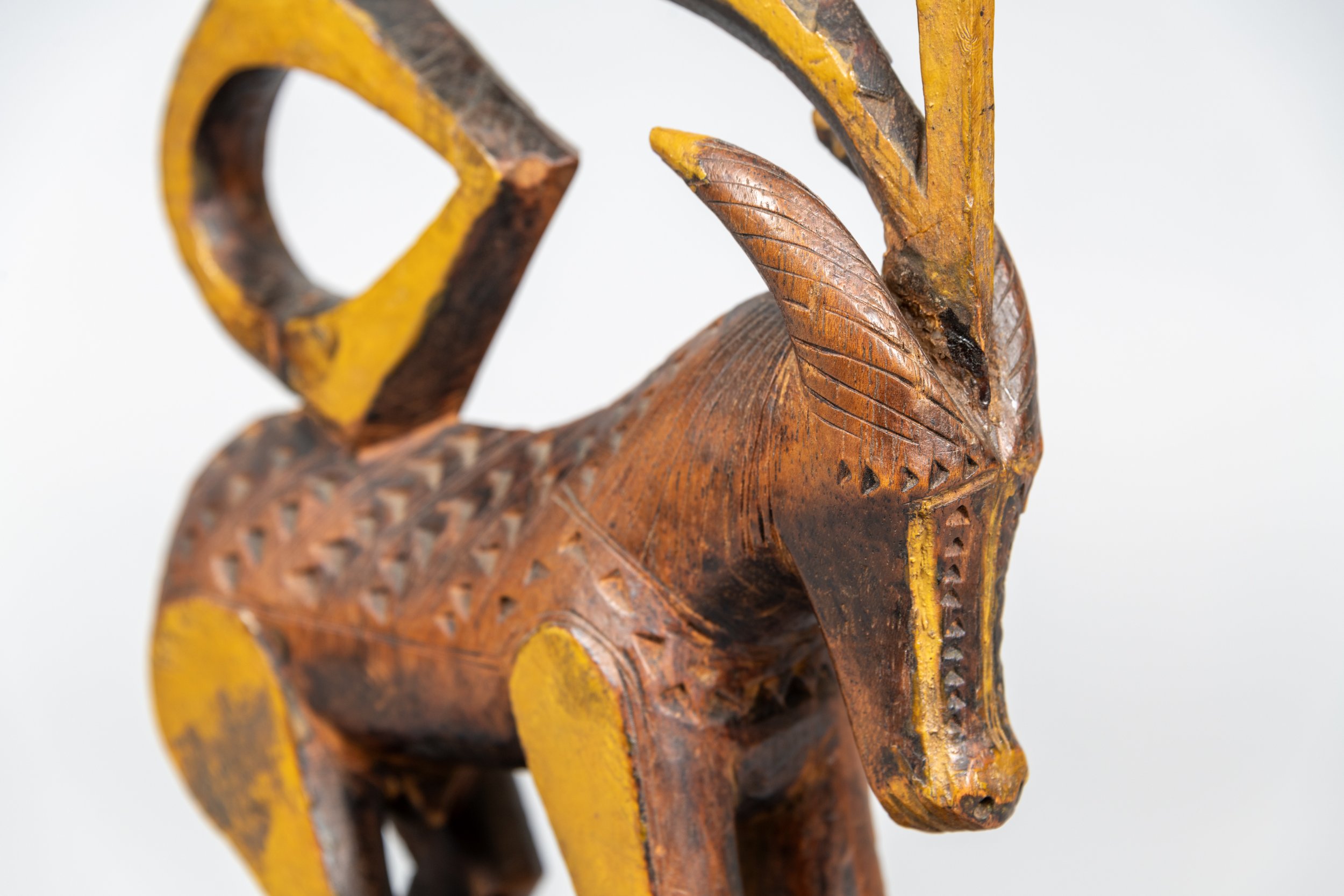
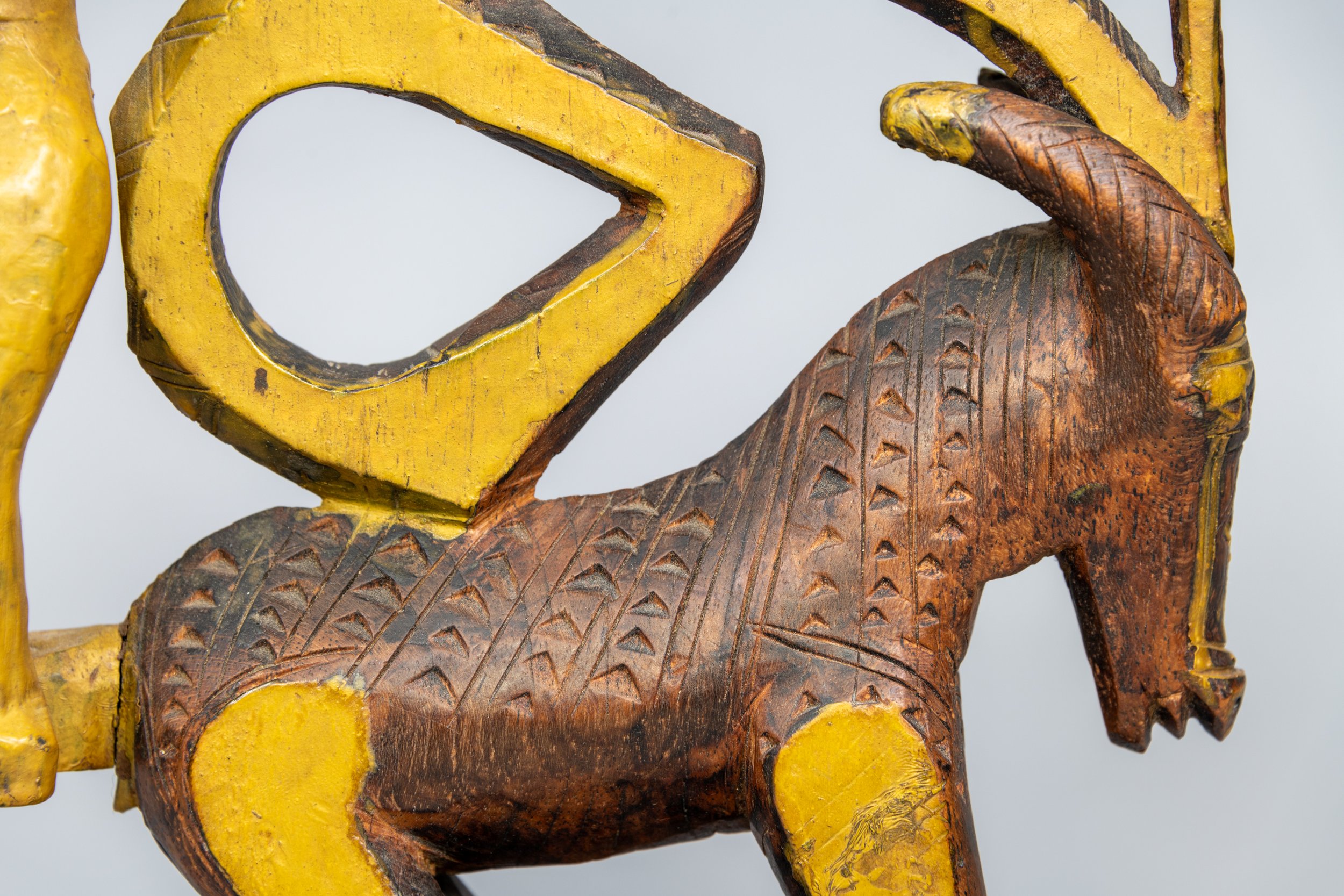


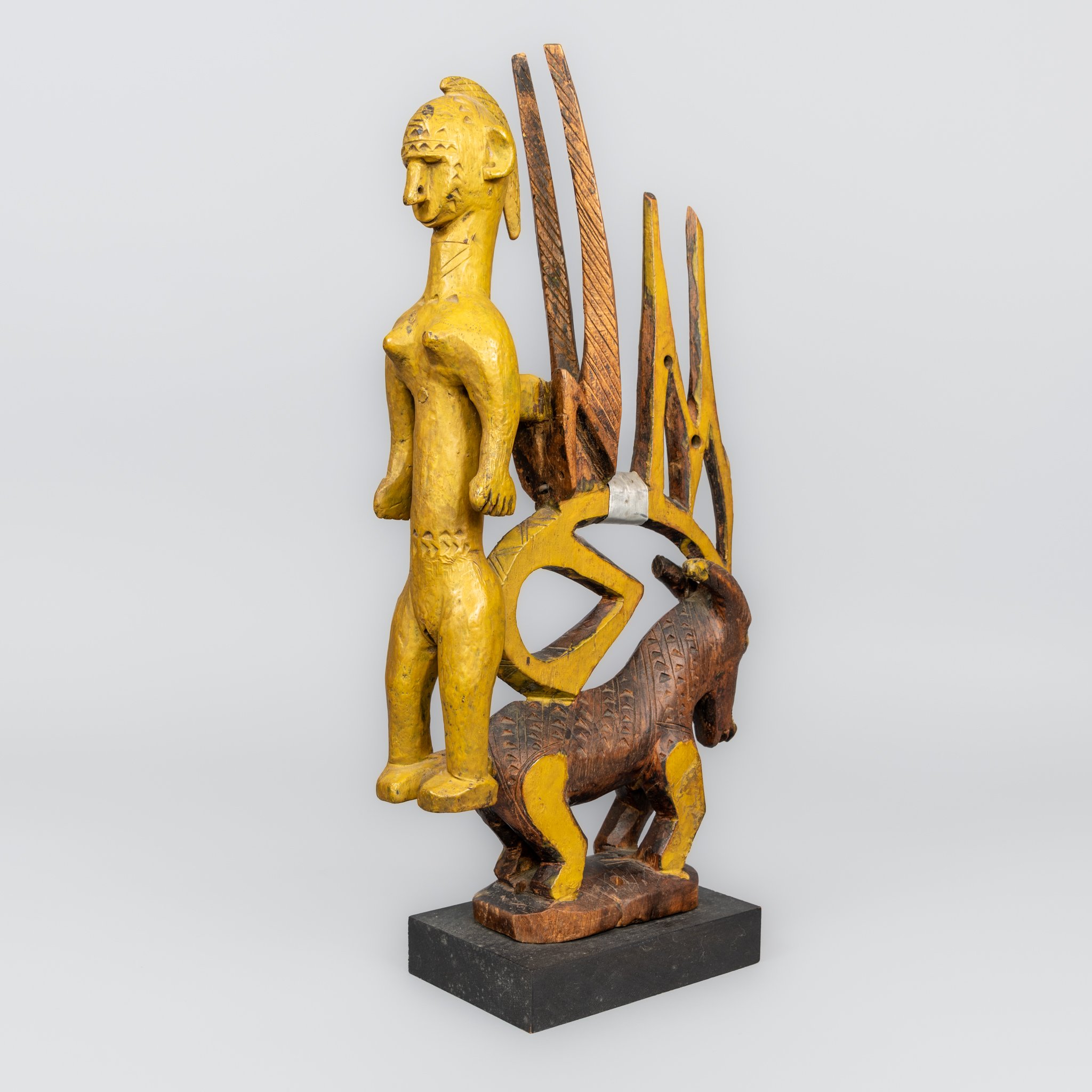

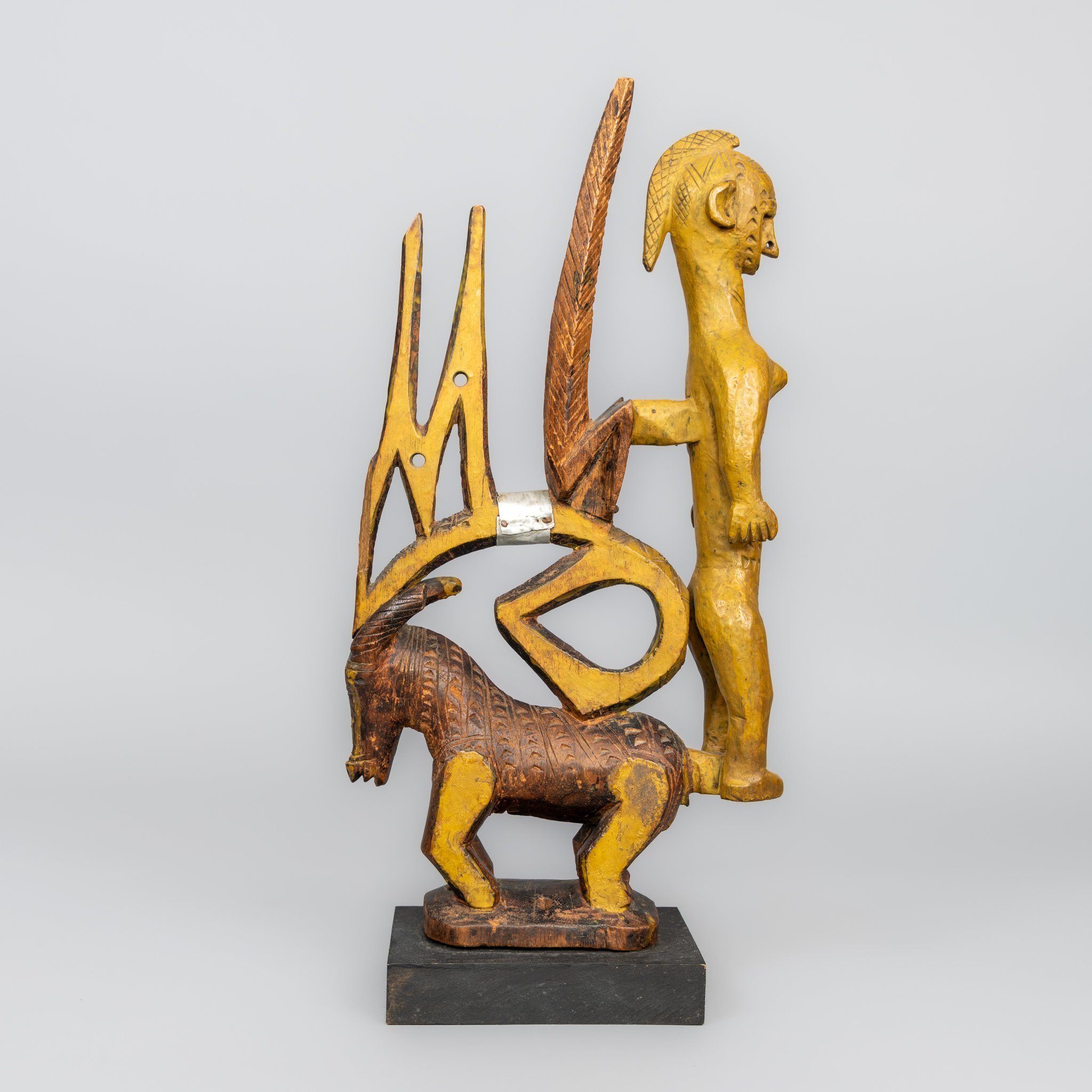
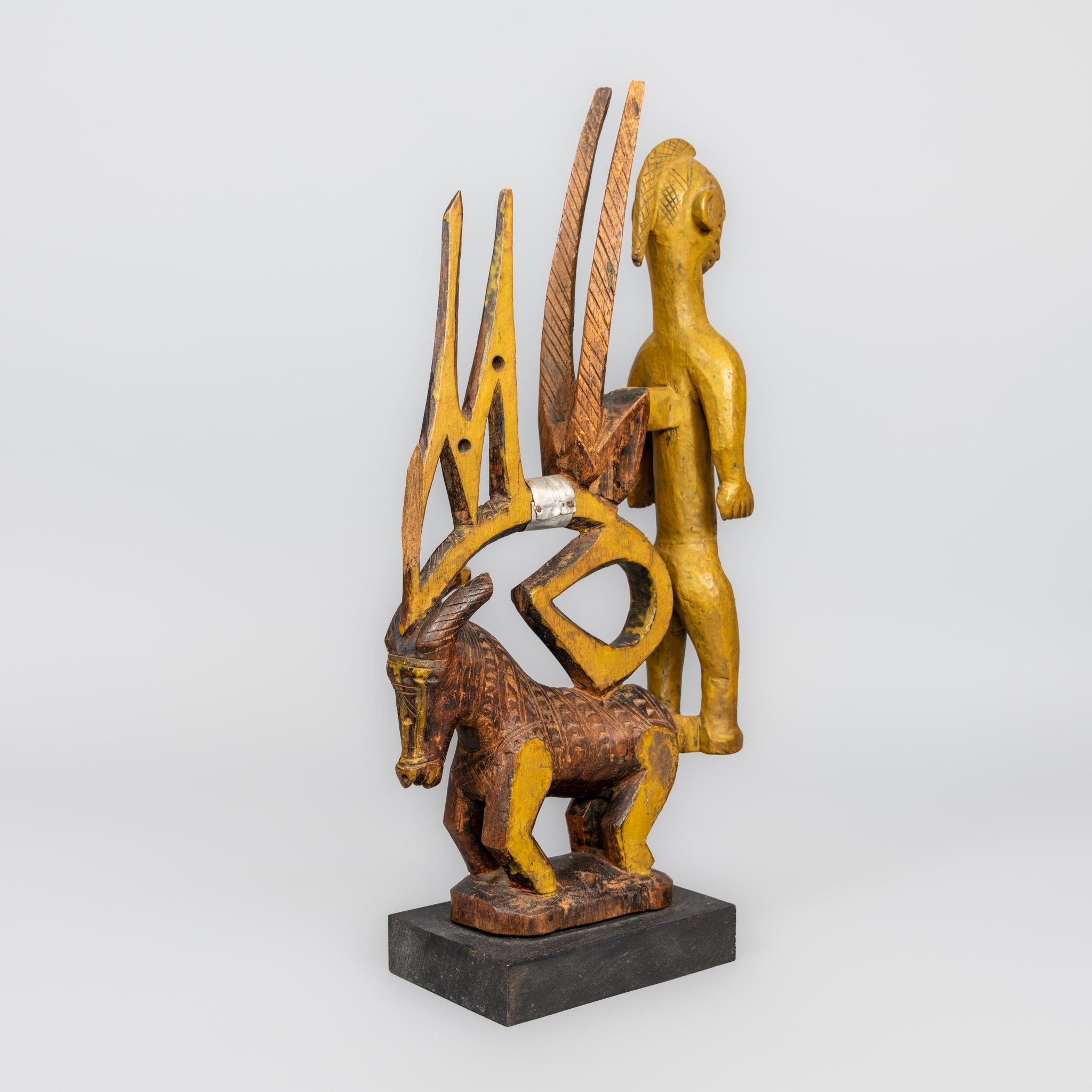

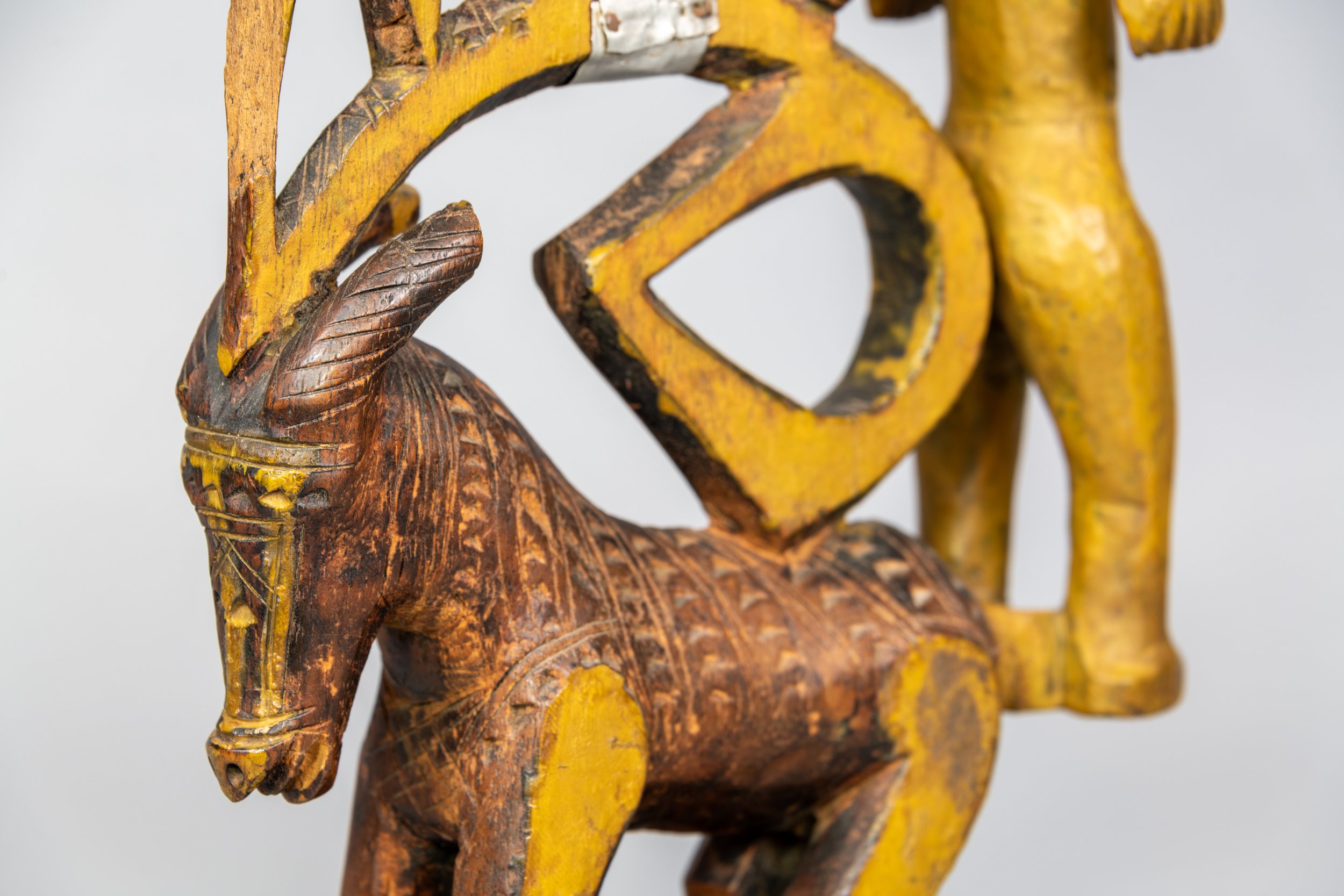
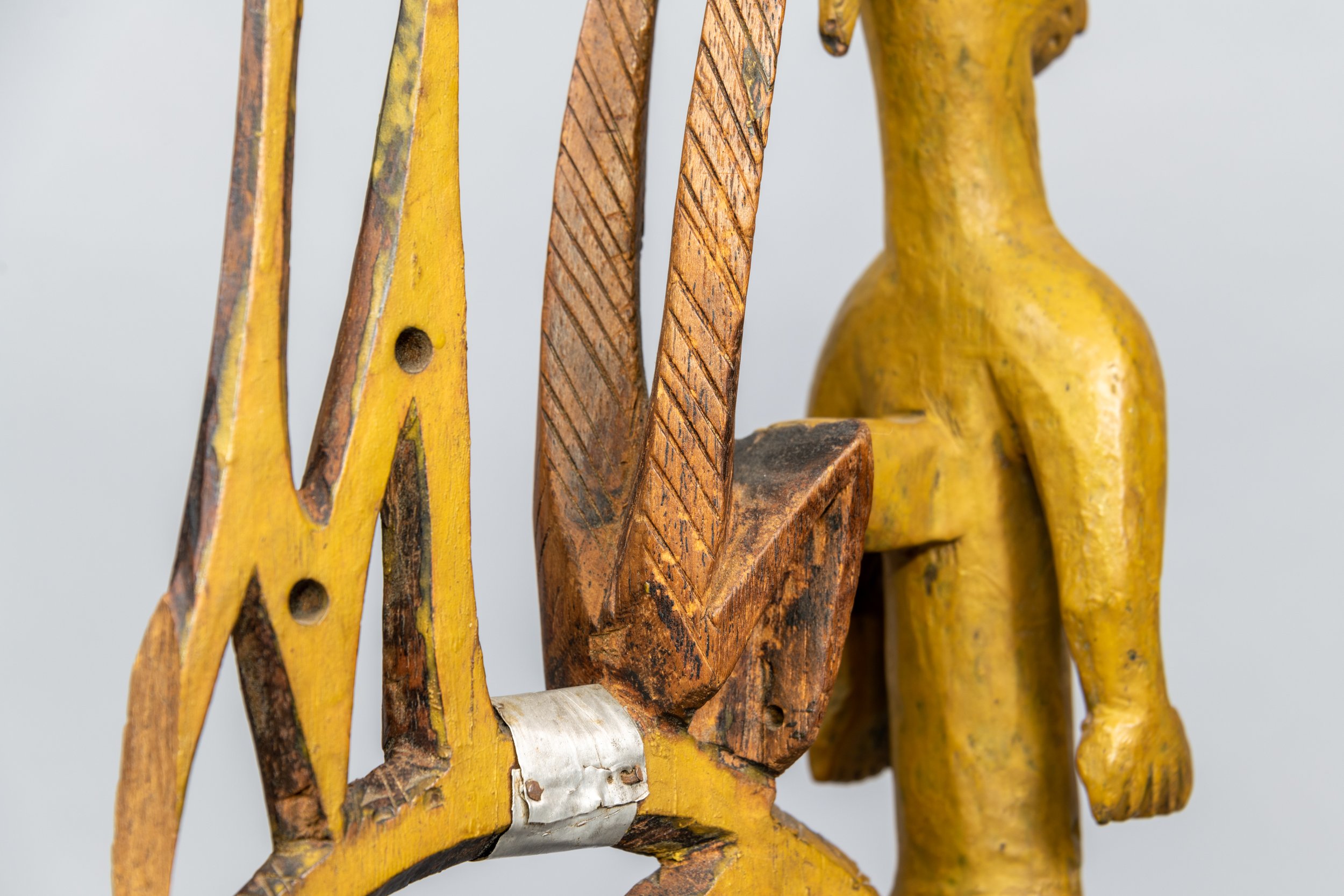





Bamana, ci wara/chiwara pair, Mali
wood, metal, pigment
16-16.5in / 40.6-41.9cm
ex Basel, Switzerland dealer (Galerie Walu?)
ex Royal Athena Galleries, NYC (1996)
ex collection of Patricia Kluge
Sotheby’s June 2010 - The Collection of Patricia Kluge - Albemarle House, Lot 672
collection of Chris Doane, CO
This ci wara pair is one of my favorite I’ve come across over the years. I especially love the use of the yellow pigment on them highlighting different features. Color isn’t something you see on a lot of examples, but yellow (and sometimes red/ochre) pigment has been documented on examples before the 1930’s. I had a lot of fun photographing this pair because they really complimented each other very well, especially head-to-head where the zigzag patterns seemed to continue from one figure to the next. There are some old breaks, some of which have been repaired and are visible in the photos. Usually in this general style the animal on the bottom is depicted as an aardvark, but in this case its a roan antelope which is depicted as the main animal on fewer examples. The overall form isn’t as abstract and composite as some types, but I like the clear representation of the roan antelope and especially like the zigzag patterns on the top. I have only come across a couple of other examples that have the teardrop form represented underneath the horns like is found on these examples. I don’t know the meaning or significance, but it’s a nice visual feature.
Ciwara/ci wara/chiwara/tji wara crests, some styles called soguni kun, were worn by dancers during ritual ceremonies which were intended to encourage men during work in the fields and to celebrate harvests. A male headdress and a female headdress were always combined in order to symbolize the elemental forces. The male ci wara crest symbolized the powerful Sun, while its gentler female counterpart symbolized the nurturing earth. The dancers were also clad in long raffia fibers that fell from the headdress to the ground and whose undulation imitated the fluidity of water, adding to the convergence of the elemental forces of the sun and the earth.
Different regions within Bamana society display unique sculptural variations of ci wara iconography with the vertically dominated form prevalent in the east. These headdresses represent the comparatively more abstract type of ci wara headdress which is found primarily in the Ouassoulou region of the southwestern Bamana area. Some forms from this area are more of a composite of different animals, but this pair represents roan antelope with fantastic zigzag patterns depicted on their backs. It has been suggested that the openwork zigzag carving invokes the sun's corona and its radiance, and it has also been suggested the zigzag represents the sun rising and setting in the sky. There is a much larger occurrence of the representation of a human form found on the ci wara from the southwestern Bamana area as is seen with the example being offered.
Unlike most ceremonies, women are permitted to attend ci wara events. The initiations and some of the public ceremonies are organized by the village association ton. While many of the ceremonies associated with this society are very public, some of the rites are kept secret, and only men can participate. Ci wara celebrates agricultural work and glorifies male and female union: “The organization of the ci wara performance is based on the Bamana respect for the power and efficiency of the union of male and female. As human reproduction is the result of the sexual union between man and woman, so agricultural fertility is attributed to the union between fire (the sun), an expression of the male principle, and earth and water, an expression of the female principle” (James T. Brink, Dialectics of Aesthetic Form in Bamana Art, Milwaukee, 1981, p. 25).
There is a great article on ci wara, primarily the soguni kun variety, in the 2016 Winter volume of Tribal Art magazine.
$1800 plus shipping (ON HOLD)
A copy of the Sotheby’s catalog from her collection, a huge 619 page catalog, can be included with the pair if desired.
Click/Tap on any image below to bring up the image viewer.


























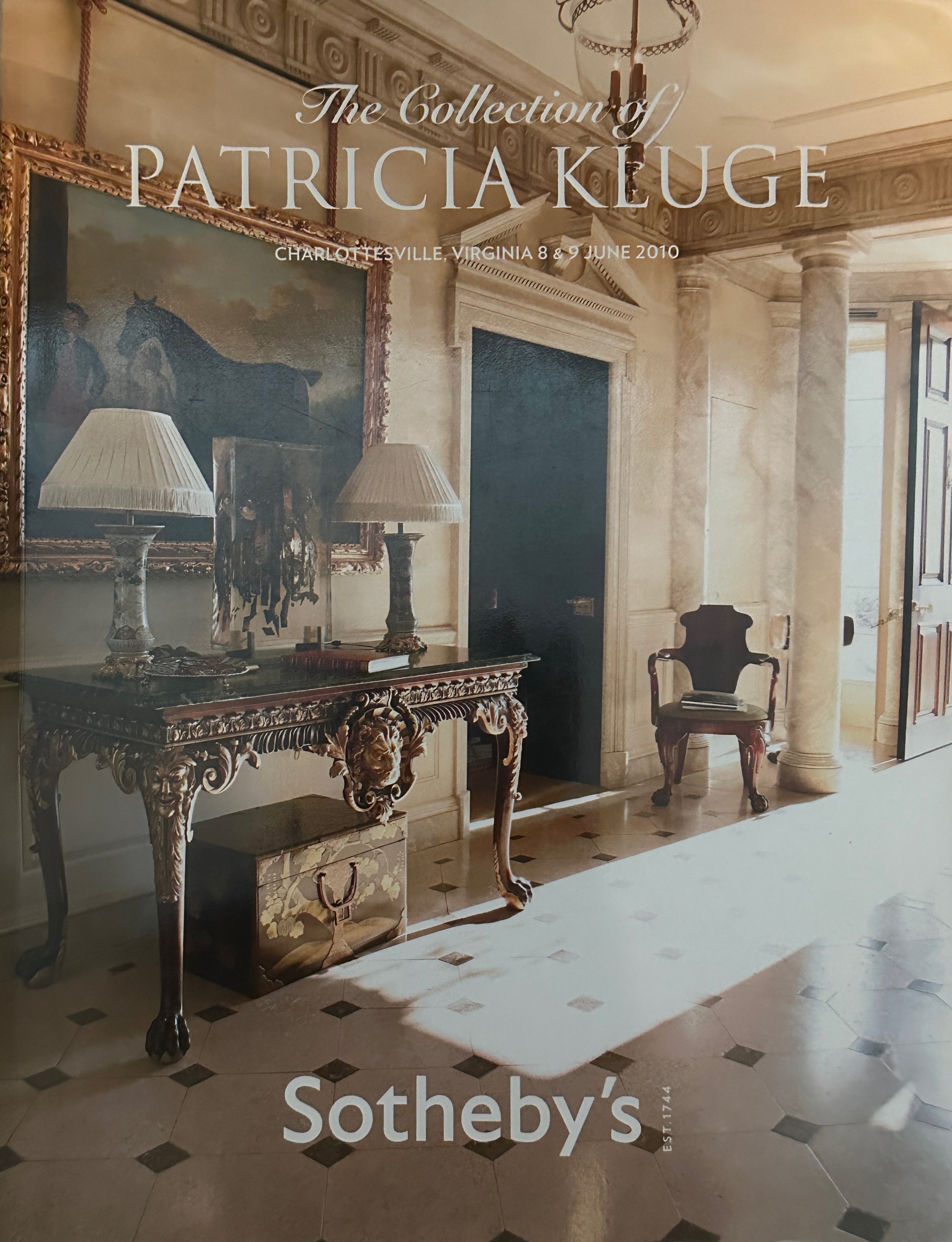

INQUIRE
If you have questions, requests for high resolution photos, or would like to inquire about purchasing this object please use this form.

